
CEO Makes A LinkedIn Post Saying “Never Hire Anyone That’s Looking For Work Life Balance,” And It Backfires
With 24/7 connectivity, it is easy for work to invade our personal time and cause burnout. So maintaining a healthy harmony between the two has become a high priority for many.
But if they’re applying for a job with Scott Kuru, these candidates most probably won’t get it. The property investor and business mentor, who is highly active on social media, recently turned to LinkedIn to share his thoughts on the issue, advising people to “not hire anyone who is looking for work-life balance.”
Kuru’s post immediately ignited a discussion on topics like ambition, productivity, and mental health, so we at Bored Panda decided to explore it.
This CEO shared a controversial opinion on work-life balance, advising everyone not to hire low-performing B players
Image credits: kitzstocker (not the actual photo)
And it’s now making rounds on LinkedIn
Credits: Scott Kuru
We need work. Researchers have demonstrated not only that labor leads to validation but that, when these feelings are threatened, we’re particularly drawn to activities that require effort – often some form of work – because these highlight our ability to shape our environment, confirming our identities as competent individuals.
Being active even seems to make us happier in circumstances when we could choose leisure instead. This was demonstrated by a series of experiments in which participants had the option to be idle (waiting in a room for 15 minutes for an experiment to start) or to be busy (walking for 15 minutes to another venue to participate in an experiment). Even though few participants chose to be busy unless they were forced to make the walk, or given a reason to (being told there was chocolate at the other venue), the researchers found that, somewhat counterintuitively, those who did ended up significantly happier than those who spent the 15 minutes waiting – no matter whether they had a choice or chocolate, or neither.
The idea that work, or putting effort into tasks, contributes to our general well-being is closely related to the psychological concept of eudaimonic happiness – the sort of happiness that we derive from optimal functioning and realizing our potential.
The post quickly went viral and has received many reactions
Image credits: Prostock-studio (not the actual photo)
However, take it to the extreme and the picture quickly changes.
Burnout is broadly defined as physical and emotional exhaustion, coupled with decreased motivation and lowered performance at work. The American Psychological Association (APA) said it “results from performing at a high level until stress and tension, especially from extreme and prolonged physical or mental exertion or an overburdening workload, take their toll.” In 2019, the World Health Organization (WHO) included burnout in its International Classification of Diseases and defined it as an “occupational phenomenon” (while also maintaining it is not a medical condition).
Burnout has traditionally been associated with executives in industries that have a long-lasting culture of presenteeism, like law, consulting, and finance. However, it’s increasingly affecting different generational cohorts, especially young people, and is manifesting across an array of sectors.
According to the nationally representative 2022-2023 Aflac WorkForces Report, more than half (59%) of American workers are experiencing at least moderate levels of burnout, a notable increase over 2021 (52%) and on par with the levels reported in 2020 at the height of the COVID-19 pandemic.
It also found that employees are asking for mental health care in higher numbers than ever before.
- Mental health negatively affected the performances of nearly half (46%) of the U.S. workforce in the past year — a significant increase over 2021 (34%);
- More than half (51%) of employers recognize that employee mental health issues have affected their businesses over the past year;
- Nearly 80% of employees state that mental health coverage is critical, yet only 61% have access to mental health care as part of their benefits package.
In one of the largest studies of burnout, Gallup found the biggest source was “unfair treatment at work.” That was followed by an unmanageable workload, unclear communication from managers, lack of manager support, and unreasonable time pressure.
The researchers pointed out that the thing those five causes have in common is your boss. “Get a bad one and you are almost guaranteed to hate your job,” they wrote. “A bad boss will ignore you, disrespect you and never support you. Environments like that can make anyone miserable. A manager’s effect on a workplace is so significant that Gallup can predict 70% of the variance in team engagement just by getting to know the boss.”
And that number is expensive. Employees who are not engaged or who are actively disengaged cost the world $7.8 trillion in lost productivity, according to Gallup’s State of the Global Workplace: 2022 Report.
Most of which are negative
Image credits: nikki_meel (not the actual photo)
Kuru then released a follow-up statement, further explaining his thoughts
Credits: Scott Kuru
191Kviews
Share on FacebookKuru: "I am not against work life balance. Balance is important". Also Kuru: "Never hire anyone that's looking for work life balance". Translation: "Work life balance is important for ME, but everyone else can get f****d". The CEO mantra.
Nobody ever laid on their deathbed and wished they'd spent more time at work.
Kuru: "I am not against work life balance. Balance is important". Also Kuru: "Never hire anyone that's looking for work life balance". Translation: "Work life balance is important for ME, but everyone else can get f****d". The CEO mantra.
Nobody ever laid on their deathbed and wished they'd spent more time at work.

 Dark Mode
Dark Mode 

 No fees, cancel anytime
No fees, cancel anytime 








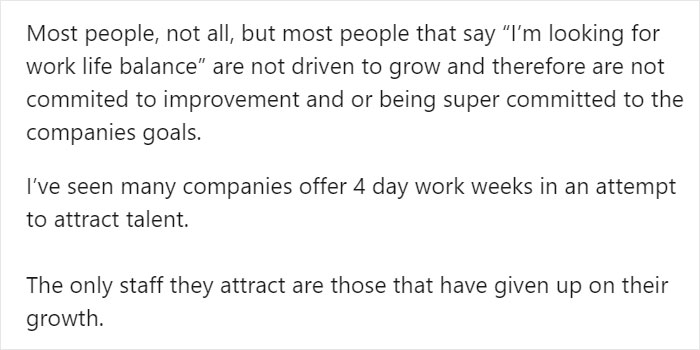
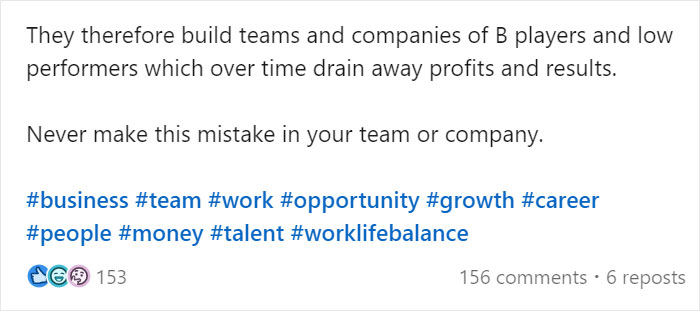




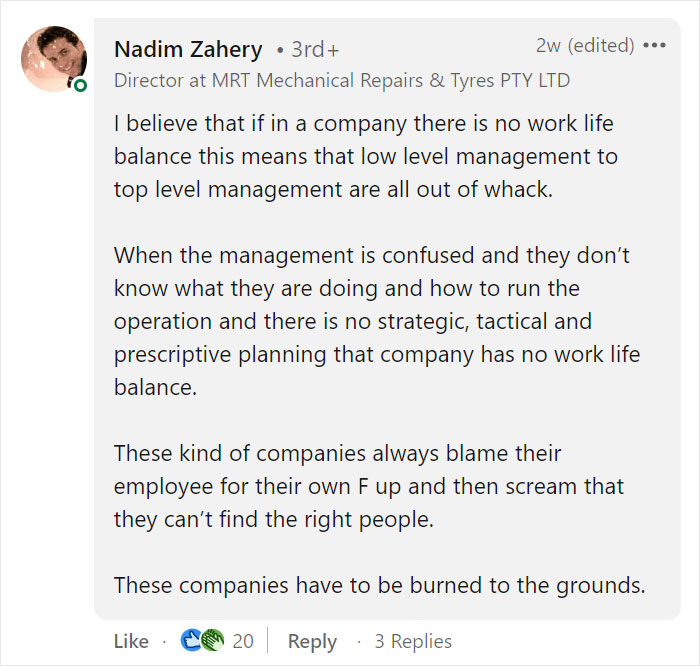




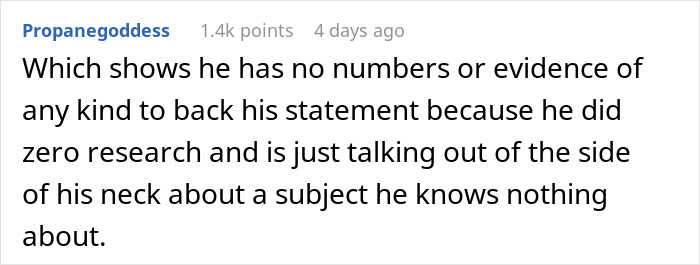


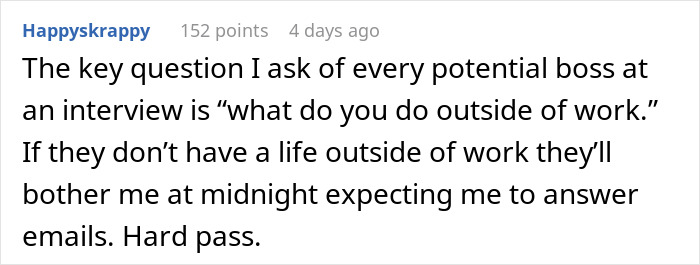








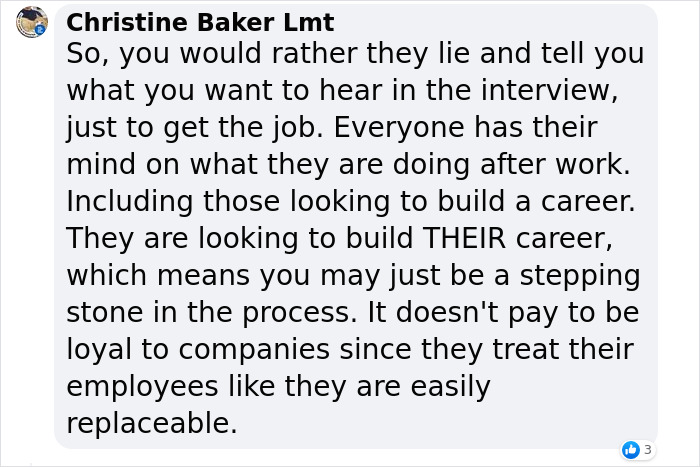







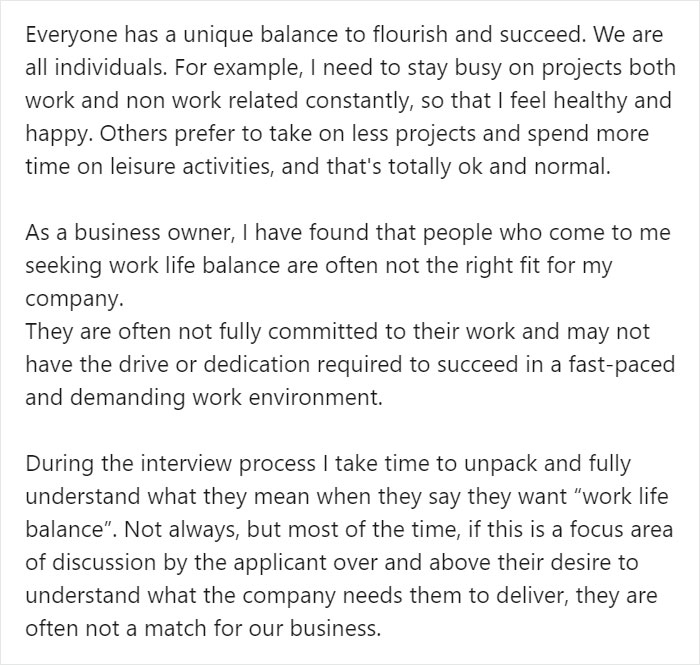
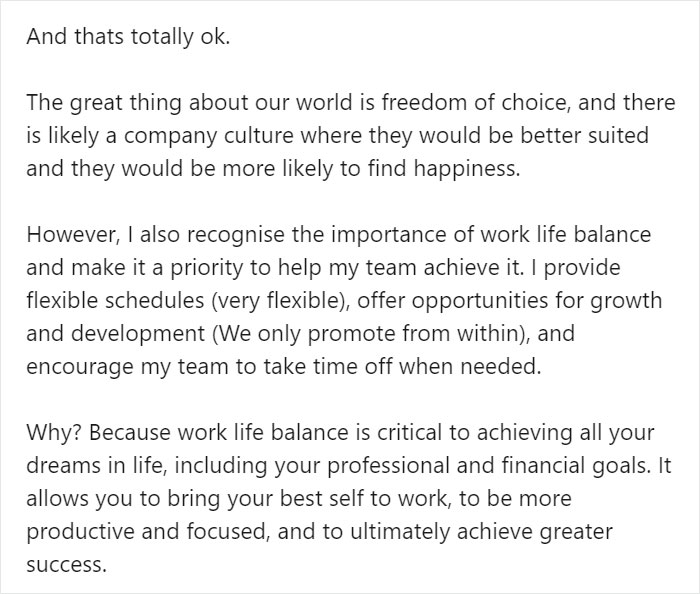
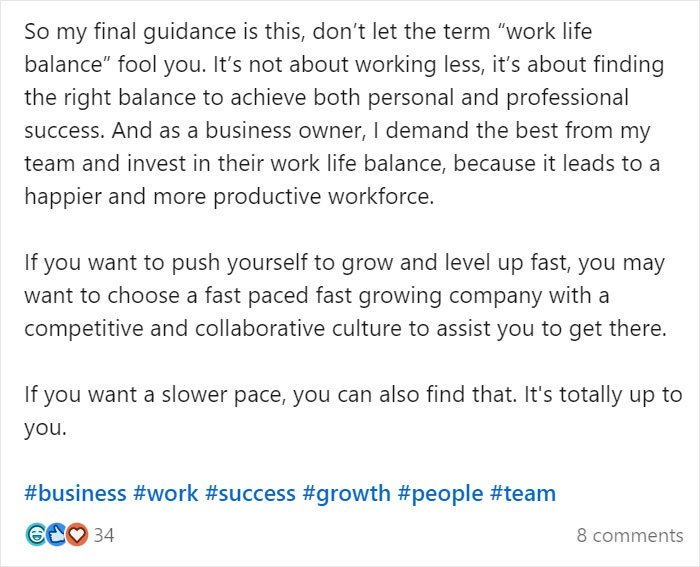












































61
65